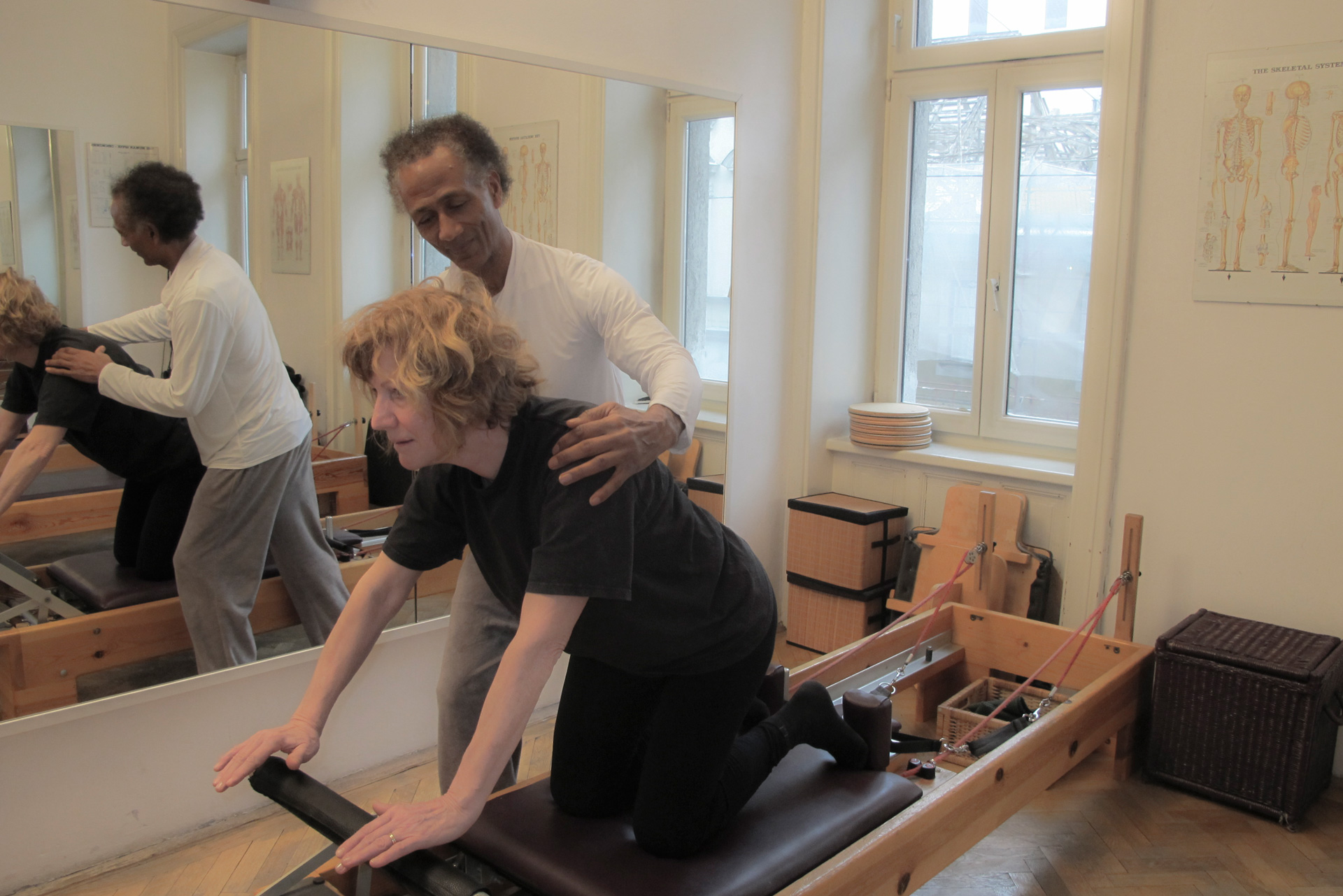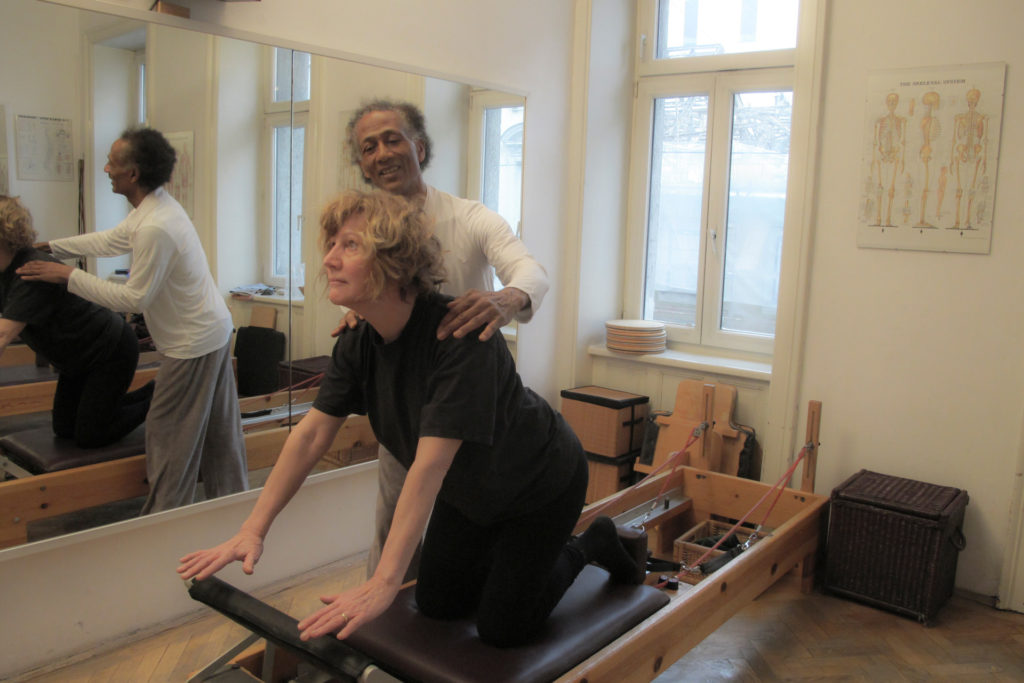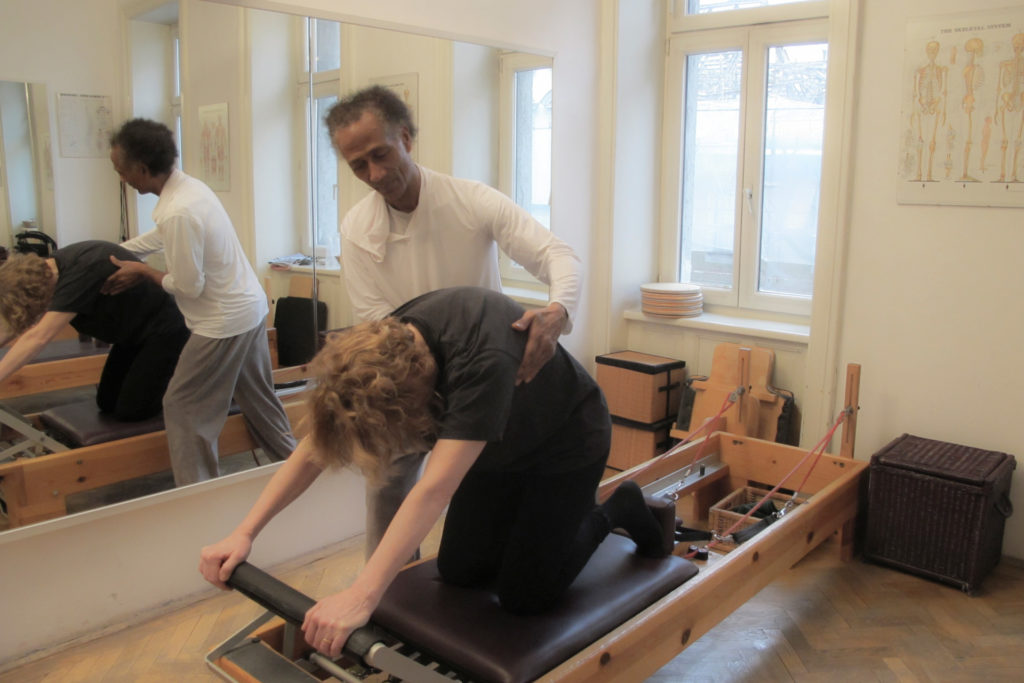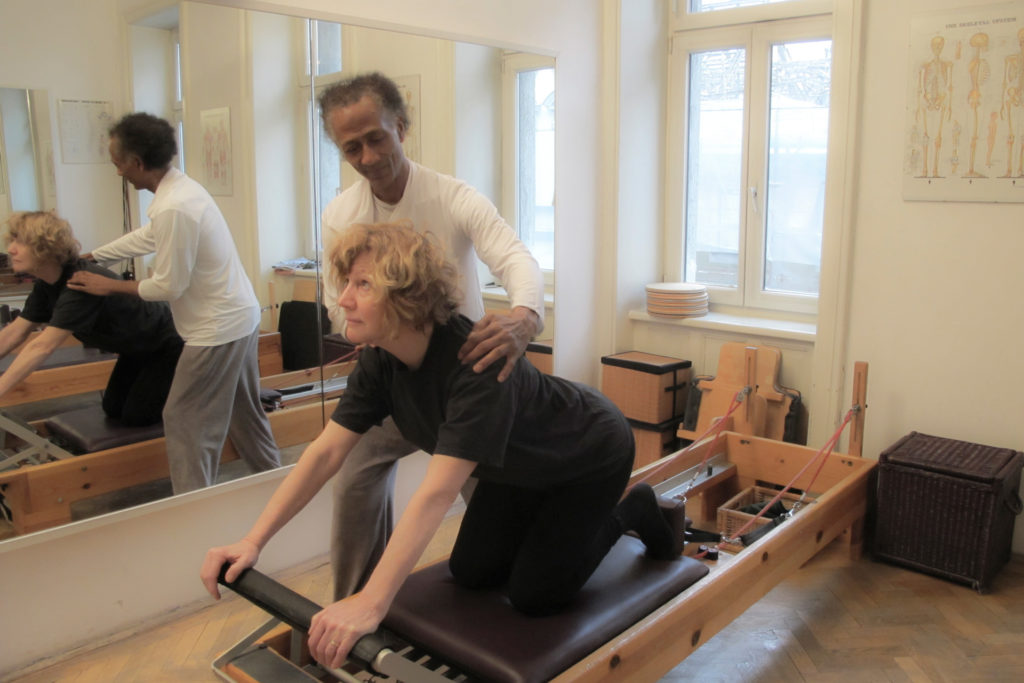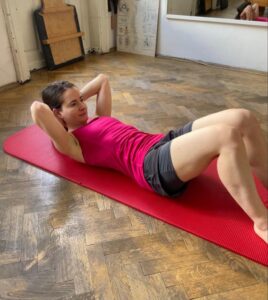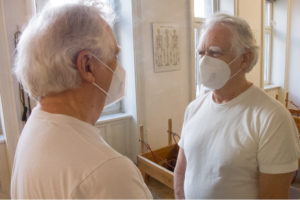Magic is simply a moment of illuminating surprise.
To get to this kind of magic, I need to decode the nervous system of my students.
Through Social Engagement to Pilates Magic
The first thing I need to do is to switch off the reptilian defensive posture – fight, flight and freeze – so that my students can switch on their social engagement system – see, hear and laugh. Then it’s a matter of finding out how my students’ nervous systems work. Because if I have the key to their nervous system, I can develop a strategy. A strategy that helps them improve so we can together create the change they wish. An important point here is that my students …
Listening closely and following instructions
Let me illustrate this with an example. How would I get a student with an unstable and hypermobile lower back or swayback to unconsciously organise her nervous system so that she is able to successfully perform the Pilates Elephant or Knee Stretches on the Reformer? What do I need to do to get her to move her knees back and forth without moving her pelvis or back?
First of all, I need to make sure she is in the following position on the reformer: On her knees with her back rounded, arms extended forward and hands on the bar of the reformer. I then ask my student to slowly and evenly lift both hands from the bar. In this position, I then ask her to move the reformer’s carriage back and forth with her knees with as little effort as possible – just enough movement so that she feels the vibration of the carriage. Then I ask her to do the same movement again, but this time with an arched back.
Here, it is really important that my student follows the instructions precisely – that she does exactly what I tell her. Because only if she listens precisely – like a musician – she will experience a change in the way her nervous system works. Voilá, the functionality of the movement changes! This is the moment of illuminating surprise.
Functionality takes over
My student so comes out of the state that is controlled by her faulty habit. She is guided towards a position that is directed by a functional reflexive behaviour pattern. We can recognise this new functionality in the stretching, lifting and collaborative work of the deep muscle corset system (DMCS) – her powerhouse – and the shoulder girdle stabilisers. In this position, my student with a hypermobile or unstable back feels rooted like a tree and free like a bird at the same time.
But we are not finished, yet.
Holding on to the new body experience
To keep this feeling in her body, I ask my student to take a mental picture of this new body-experience. Then I ask her to do the exercise as supposed to: With her hands on the bar of the reformer she moves the carriage back and forth with her knees – first with a rounded and then with an arched back.
Voilá! In this short period of time, my student has learned to bring her back from a dysfunctional to a functional position.
By the way, the same approach can be used with similar effect for the Pilates Elephant.
Nervous system decoded!
In cooperation with my student, I was able to decode and trick her nervous system. My student is now able to perform the Pilates Knee Stretches and the Elephant without being at the mercy of faulty movement patterns – which by the way are the result of her unstable and hypermobile lower back.
Isn’t it wonderful, this synergy of thinking, feeling and doing!
Listen closely, try it & fly with it!
Did you like our blog post? Then kindly support us and share it on social media sites like Facebook, Twitter, group forums, blogs and – all the retro way – personally among friends. We also highly appreciate your feedback on our exercises and posts.
